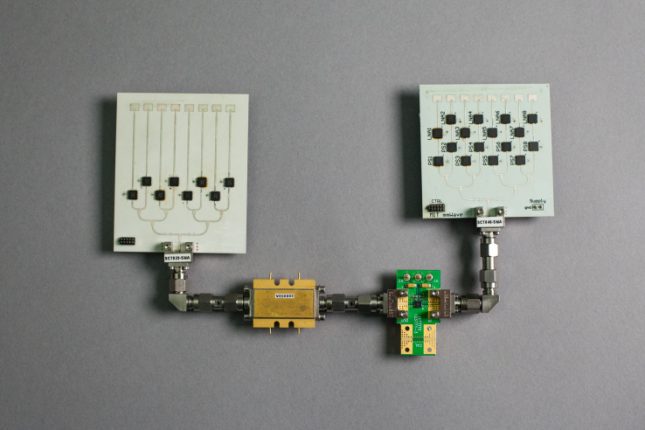MIT Develops Wireless VR Capabilities Through Their MoVR System
Although Virtual Reality headsets are not yet found within every household, those who do have the high resolution VR headsets are usually limited in their mobility due to having to be connected to a computer through a HDMI cable. The Computer Science and Artificial Intelligence Laboratory at MIT have a team of researchers who put out a prototype for a device (MoVR) that will allow VR users to roam free without a hefty HDMI cable weighing them down. This could potentially help transform VR into a more user friendly experience.
The technology works by transmitting information within frequencies ranging 30GHz to 300GHz which is in the higher frequencies of radio signals known as millimeter waves (mmWaves). When tested, the research team reported that the rate of communication reaches multiple Gbps. Dina Katabi (MIT professor who lead the team of researchers) made a statement on the advancement to VR that this technology offers: “It’s very exciting to get a step closer to being able to deliver a high-resolution, wireless-VR experience. The ability to use a cordless headset really deepens the immersive experience of virtual reality and opens up a range of other applications.” The team of researchers at MIT tested this device on an HTC Vive but claimed that the MoVR will work on any headset.
The difficulty in the development comes from the consideration of the amount of data that is needed to be transferred in order to deliver high-resolution video immediately to the headset from the computer. An assistant professor from the University of Illinois (Haitham Hassanieh) stated, “This requires sustaining data rates of more than 6 Gbps while the user is moving and turning, which cannot be achieved by any of today’s systems.”
The difficulty the team faced in developing the wireless VR related to the mmWaves used for the system. The high frequency waves are easily blocked by objects and this proves to be difficult in transmitting the information if the user places a hand in front of the device. As a response the researchers developed MoVR which detects the direction of the mmWave frequency and redirects it to the headset through programmable mirrors.
The MoVR sounds like a great addition to a home VR setup by stripping users of the worries of being burdened by a HDMI cable. With the advancements in VR technology and the accessories evolving along with them to help the user experience, perhaps we’ll see an increase in VR use in the near future.


